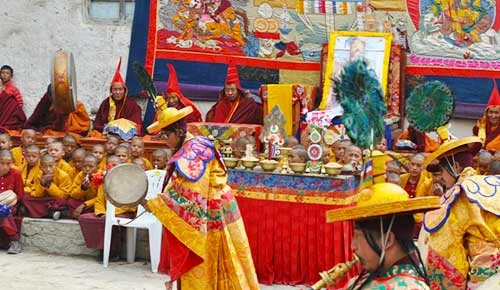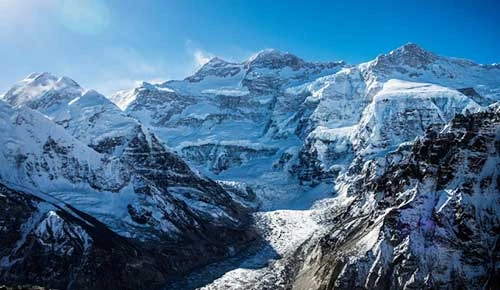Annapurna Base Camp Difficulty
The Annapurna Base Camp Trek is a renowned and captivating adventure that takes trekkers through the mesmerizing landscapes of the Annapurna region in Nepal. This trek leads to the base camp of the majestic Annapurna mountain range, providing an up-close and awe-inspiring view of its towering peaks.
With its picturesque scenery, diverse terrain, and cultural encounters with local communities, trekking to Annapurna base camp has become immensely popular among adventure enthusiasts from around the world.
The trek offers a unique blend of natural beauty, including lush forests, cascading waterfalls, and panoramic vistas, making it a dream destination for nature lovers and photographers. Moreover, the rich cultural experiences along the way, such as encountering Gurung and Magar ethnic communities, add a fascinating dimension to this incredible journey.
The trek to Annapurna base camp spans 10 days, depending on the chosen itinerary and the trekker's pace. The route typically begins in Nayapul or Pokhara and gradually ascends through various settlements and terrains.
Trekkers traverse through lush rhododendron forests, charming villages, and terraced fields, offering glimpses of the local lifestyle and traditional practices. As the trek progresses, the landscape transforms into a rugged alpine environment with breathtaking views of snow-capped peaks and glacial valleys.
The final destination, Annapurna base camp, stands at an elevation of 4,130 meters (13,550 feet), providing trekkers with an unparalleled panoramic view of the Annapurna massif, including peaks like Annapurna I (8,091 meters) and Machhapuchhre (6,993 meters).
The altitude gain throughout the trek can be demanding, but the rewards in terms of natural grandeur and a sense of achievement are undoubtedly worth the effort.
The purpose of this blog is to delve into the difficulty level of this trek, providing insights and information to help trekkers prepare for this challenging adventure.
Table of Contents
Trekking Duration and Daily Mileage
When going on the trek, it is essential to have an understanding of the trek's duration and daily mileage. On average, this trek takes around 10 days to complete, although the exact duration may vary depending on individual preferences and physical fitness.
Throughout the trek, hikers can expect to cover a daily mileage of approximately 10–15 kilometers (6–9 miles). This estimation takes into account the varied terrain and altitude gain along the route. Most days involve around 5–6 hours of walking, with breaks for rest and meals.
It is important to note that the trek also includes designated rest days to allow for acclimatization and exploration of the beautiful surroundings. Walking long distances with a backpack can pose challenges, including physical endurance, managing the weight of the backpack, and adjusting to the changing terrain.
However, with proper training, packing smartly, and maintaining a steady pace, these challenges can be overcome, allowing trekkers to fully enjoy the breathtaking climb to Annapurna base camp.
Annapurna Base Camp Difficulty Level and Rating
The difficulty rating can be assessed by considering various factors. The trek involves challenging uphill and downhill sections, long walking hours, and continuous altitude gain.
The physical fitness required for this trek is moderate to high, as it demands good endurance and stamina. The altitude and potential risks of altitude sickness add to the difficulty level, making acclimatization an important aspect of the trek.
However, despite these challenges, the Annapurna trek is accessible to individuals with different fitness levels. With proper preparation, training, and acclimatization, even those with moderate fitness levels can embark on this adventure.
It is crucial for trekkers to assess their own fitness capabilities and make informed decisions regarding their readiness for the journey. Hiring a guide or porter can also be beneficial for additional support during the trek.
Ultimately, this trek's difficulty level can be perceived as moderate to difficult, but with the right mindset and preparation, it can be a rewarding and achievable experience for many adventurers.
Conclusion
In conclusion, Annapurna base camp offers an exhilarating adventure amidst stunning natural beauty and rich cultural experiences.
Throughout this blog, we have explored various aspects of the trek's difficulty. From the physical fitness requirements to the challenges of altitude and acclimatization, it is evident that this trek demands a certain level of endurance and preparation.
Considering the trek's duration and daily mileage, it is crucial for aspiring trekkers to assess their fitness level realistically. While the trek may pose challenges, it is an achievable feat with proper training and preparation.
If you are ready to take on the challenge, we highly recommend booking your Annapurna base camp trek package with Nepal Trek Adventure, a trusted and experienced trekking agency that can ensure a safe and memorable experience.






